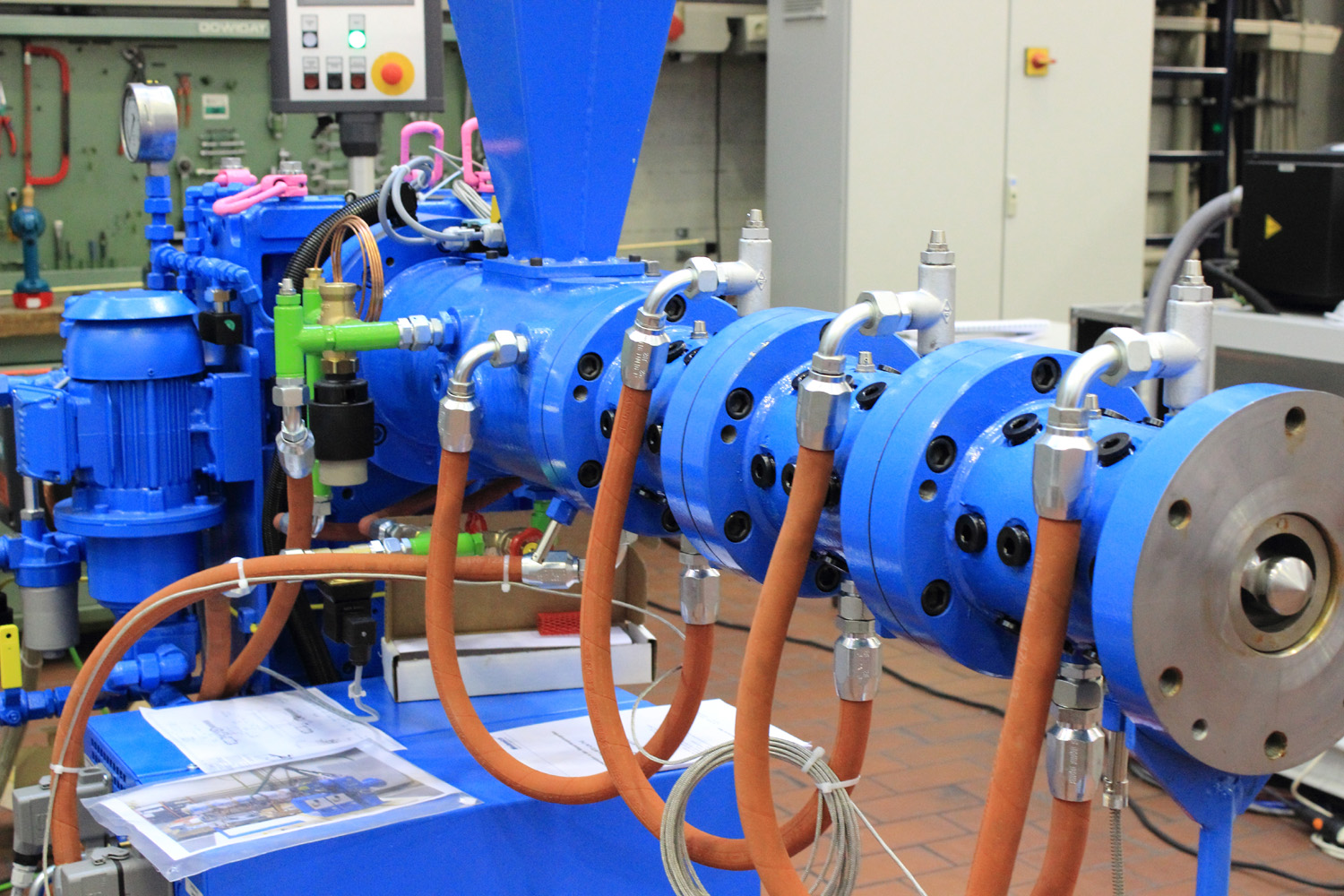Rubber Technology
In the field of rubber technology, the research of the Kunststofftechnik Paderborn is focused on the extrusion process and inducing cross-linking of rubber by heat-curing. In comparison to other forming processes, extrusion holds a particular position, as the overwhelming majority of rubber compounds are extruded at least once during production. With this technology, both end products and semi-finished products can be produced. Furthermore, extruders are used for coating or pelletizing. During the heat-curing of rubber, extruded materials are converted from a plastic to an elastic state by cross-linking, during which process the vulcanized material is transported through a hot runner and cross-linked by the addition of thermal energy.
Research in the area of rubber technology is based on simulative and experimental methods. For experimental investigations, a rubber extruder from the company Rubicon and a 60mm pin-type extruder are available. The latter represents a prototype machine for high -speed extrusion. The following gives a brief overview of current research topics:
Rubber Production
- high-speed extrusion
- mixing behavior of pin-type extruders
- CFD (Computational Fluid Dynamics) simulations
- thermal process behavior
Rubber Curing
- Optimization of hot air vulcanization processes
- CFD (Computation Fluid Dynamics) simulations
High-performance rubbers are the basic material from which various rubber products such as tyres, belts or hoses are made. A large proportion is processed in the extrusion of rubber profiles, which are used in numerous sectors such as the automotive industry, medical technology, electrical engineering and mechanical engineering. These profiles are primarily used to seal two or more components (e.g. doors, lids) or to separate liquids (e.g. coolants).
The constantly growing material requirements and increasing complexities as well as developments in material formulations require adjustments in the production processes, as inhomogeneous temperatures and degrees of cross-linking develop when using conventional vulcanisation processes.
In the course of the project, the control of a semiconductor-supported microwave is to be realised, which generates a heating profile that is homogeneous across the cross-section. This enables a reduction of the primary energy introduced into the extrudate. Furthermore, the microwave process should increase the vulcanisation quality by heating the entire cross-section as homogeneously as possible and be applicable for the cross-linking of as many rubber profiles and materials as possible.
The determination of material parameters required for numerical simulations of rubber extrusion processes is based on laboratory analytical methods, which neglect the influence of shear history on the material in the extrusion process. Rubber compounds are also prone to flow anomalies such as wall slip depending on the compound composition. The neglect of these effects leads to pronounced deviations between simulation and practice. The aim of the research project is to improve the analytical and simulative methods for the design of rubber extrusion tools by empirically determined correction factors and characteristic diagrams.
To provide these, extensive experimental investigations are carried out on EPDM rubber compounds with varying carbon black content using extrusion rheometers on two rubber extruders of different sizes (Ø 32 mm, Ø 60 mm). By using two screw geometries (conveying thread, screw with bar breakthrough), the influence of the load history on the flow properties is taken into account under comparable process conditions. In order to determine the sliding velocities, various approaches from the literature are examined with regard to their suitability and a characteristic diagram is set up to take into account sliding effects depending on the carbon black content, the temperature and the load history. In addition to wall slip effects, rubber compounds also tend to exhibit pronounced non-isothermal effects. For this purpose, the exit temperatures of the extrudate strands are recorded using IR thermal imaging cameras. The extrudate outlet temperature is estimated by developing an analytical calculation model.
The numerical flow simulations are carried out with the open source software openFOAM. The simulations are then validated in experimental investigations and the results are documented in a guide.


